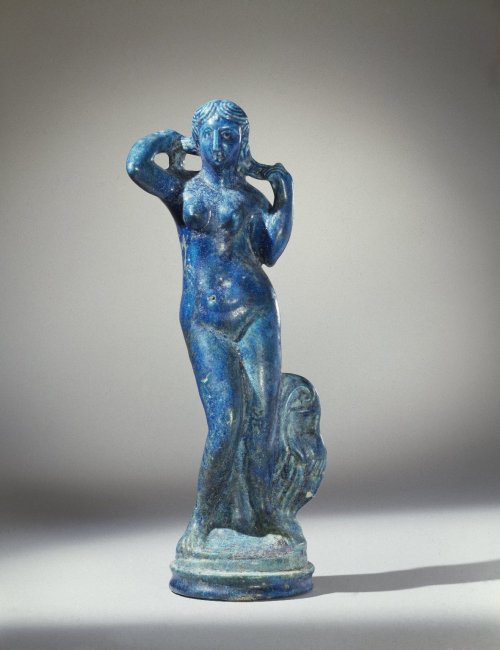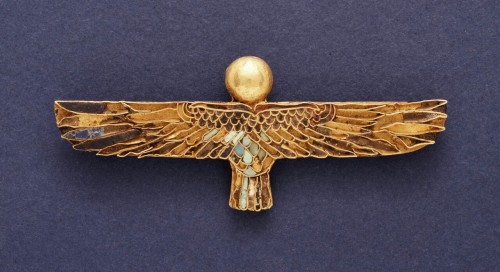#ptolemaic period

Ancient Egyptian block statue (gabbro with traces of pigment) of Neskhemenyu, son of Kapefha. Artist unknown; 4th cent. BCE (early Ptolemaic period). From a cache at the Temple of Amun, Thebes; now in the Metropolitan Museum of Art.
Statuette of Aphrodite Anadyomene
MEDIUM: Faience
DATES: late 2nd century B.C.E.
PERIOD: Ptolemaic Period
DIMENSIONS: 14 3/16 x Diam. 4 ¼ in. (36 x 10.8 cm)
Brooklyn Museum
> brooklynmuseum.org
Post link
~Amulet of a Ba.
Place: Egypt
Period: Ptolemaic Period
Date: 332-30 B.C.
Amulet of a Ba - Egyptian/Ptolemaic
ca. 332 - 30 BCE
Amulets in ancient Egypt were thought to be magical. They would be worn, carried or offered to a deity in hopes of magically gaining a specific power or form of protection. This amulet depicts a Ba, or a human headed falcon. Egyptians believed the Ba symbolized the immortal soul that came back after death and attached itself to the corpse. This specific one does not have the human head. The amulet is gold and inlaid with lapis lazuli, turquoise and steatite.
Source:The Met
Post link


